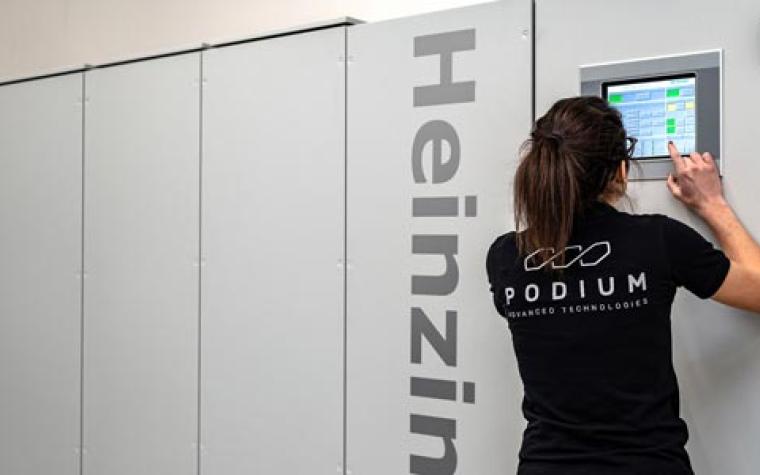News
Podium Advanced Technologies acquires state of the art 500 kW Test Bench Energy System for low and high-voltage applications
07 May 2018
Pont Saint Martin, 7 May 2018 - The new equipment complements the E/E lab lineup and enables Podium Advanced Technologies to supply the whole spectrum of requirements for automotive test applications, at the highest quality standards.
Complementing the line of already available high end equipment in its E/E laboratory, ranging from a 50 kW test bench energy system featuring a climatic cell option to a last generation wire bonding machine devoted to battery modules assembly, Podium Advanced Technologies has just acquired a Heinzinger 500 kW Test Bench Energy System.
The new 500 kW test bench provides realistic, high-quality tests with different operating states and under any requirement, as exacting as it may be.
With the new test bench it is now possible to simulate the behavior of any battery in a motion control profile test for a hybrid or EV drive train, in any given condition, where the test bench energy system takes the role of the vehicle battery.
On the other hand, in a pure battery test, possible tasks range from characterization to long-term service life testing and from start-up protection to EOL testing.
Generally, DC sources / sinks for testing rigs are a core component in the development, quality assurance and end-of-line testing for batteries and power electronics in the domain of e-mobility.
The versatility of the equipment, coupled with the Podium Advanced Technologies expertise and know-how accrued in a variety of electric and hybrid vehicle developments, enables the 500 kW test bench to be used as a battery simulator or a battery tester, allowing the following applications to be supported:
- Battery simulation
- Battery tests and verification of high-voltage batteries
- Inverter and DC engine test for EV & HEV
- Testing of charging stations
- DC Sources / Sinks for Testing Rigs
- Testing of power electronics (DC / DC converters)
- DC load for fuel cells
- Simulation of the battery’s internal resistance
- Parameterizable battery models
- Dynamic rated value change up to 1 kHz
- Continuous transition between source and sink mode
- Switchable insulation monitor function
- Currentless connection of the battery
- Discharging of the output capacities on switch-off
- Rated value monitoring and monitoring of the system limits
On top of that, by using the twin-channel device option, two items being tested can be supplied with power simultaneously, opening up a variety of different operating options for the DC sources / sinks for testing rigs.
Thanks to such option, through an “energy balancing” mode, all of the energy can circulate between the test items across both output channels. This produces fewer losses than if individual devices were being used, and only the test item’s losses from the grid have to be tracked.
As a result, even with lower installed mains power, tests can be carried out with a high power demand. Another advantage of using a twin-channel device is the opportunity to increase power for one output channel.


